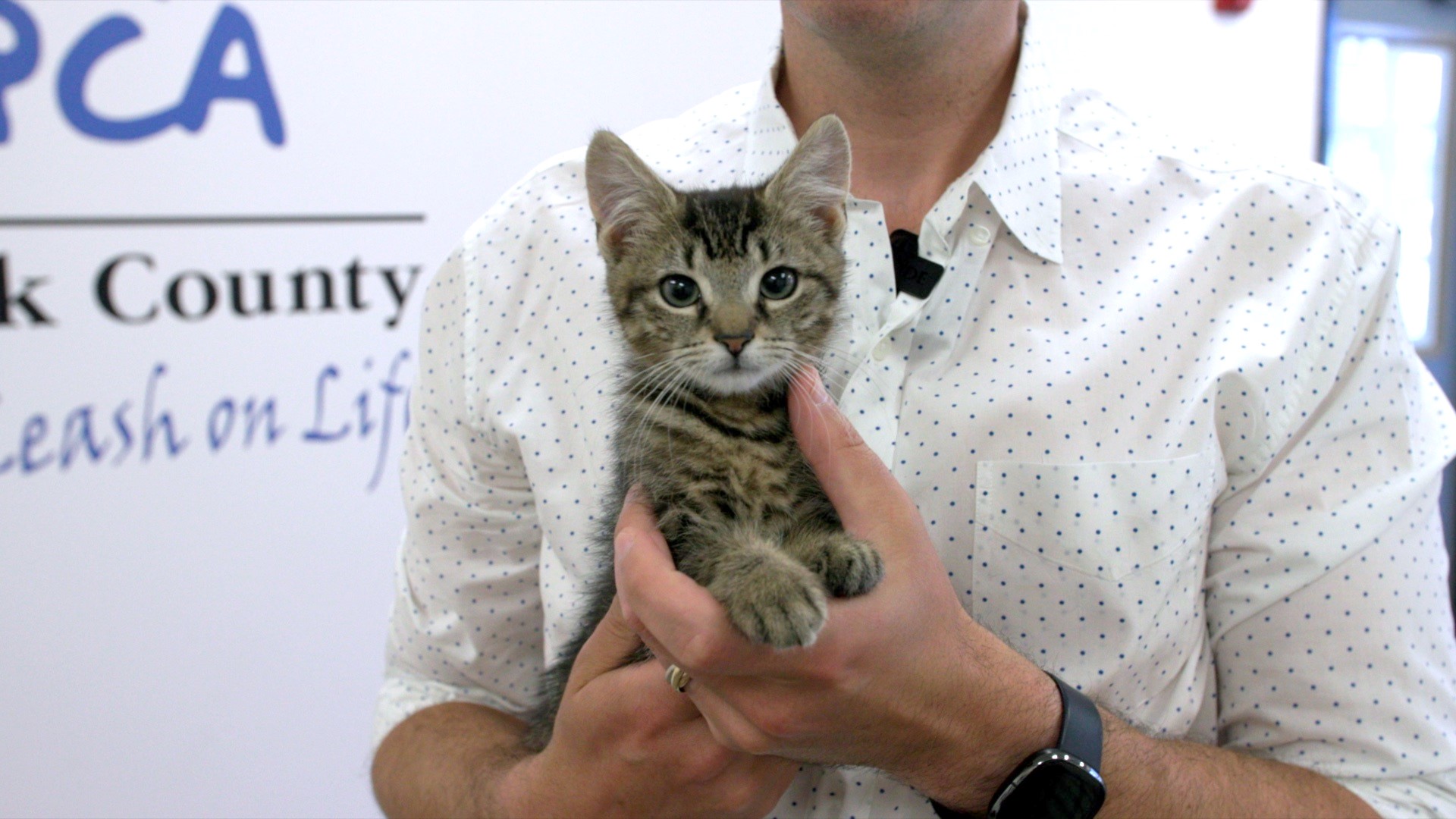YORK COUNTY, Pa. — June marks the start of National Foster a Pet Month, and workers at animal shelters say fostering could be key in clearing kennels.
With kitten season in full swing, animal shelters are filling up with young felines. A kitten’s best chance of survival is a foster home until they reach three months of age. Until then, their immune systems are too weak for a shelter environment.
“What we need are fosters to put those kittens into, those homes, because it’s a healthier environment for those kittens,” said Steven Martinez, Executive Director of the SPCA of York County. “Then, when they get to three pounds like little Lemu Emu here, they can have their surgery, we can put them up for adoption and they can find their permanent loving home.”
Many animal rescues are looking to build a more robust network of fosters and shift away from housing animals in kennels.
Pet Pantry of Lancaster County's dog program is 100% foster lead. They do not place dogs in kennels, but that means they can only save as many dogs as they have caring foster families to place them with.
Pet fostering is lifesaving and critical for animal shelters, particularly during the busy summer season.
Some dog kennels are at 100% capacity and they have not dropped below 85% capacity in the past year, which is considered a critical capacity.
“Staffing has been an issue from the start of the pandemic, as you can imagine,” said Kitty Block, President and CEO of the Humane Society of the U.S. “That's why it was so important to have people step up and volunteer and foster.”
The greatest stressors for dogs living in a kennel environment is social isolation. Foster volunteers can help mitigate that animal's stress and give them a better quality of life while they wait for their forever homes.
Fostering a pet also helps with the transition process by giving shelters a better understanding of how a dog or cat behaves around families. People can foster for a day, or several months depending on the need, and leave space at the shelters for animals who need special care or management.
“When you foster one animal, you're really saving two because you're saving the animal that you're fostering, and you're making room for the next animal that needs that spot at the shelter,” said Melissa Knicely, spokesperson for Charlotte Animal Care and Control.

